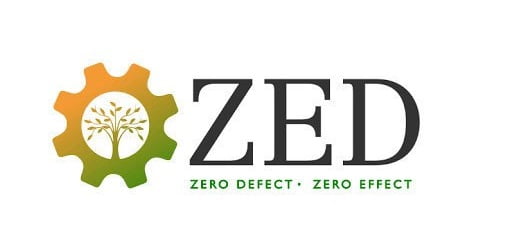Zero Defect Zero Effect Scheme (ZED)
Context:
As many as 23,948 MSMEs had registered with intent to adopt the principle of the Zero Defect Zero Effect Scheme (ZED).
About Zero Defect Zero Effect Scheme:
- Zero Defect Zero Effect scheme is a new initiative that has been launched by Indian PM,
- It was first mentioned by him during 2014’s independence day speech in regards to future India.
- This scheme is specially designed for MSME (Micro, Small and Medium Enterprises) sector for production of products that are of quality, without defect and are also environmentally friendly or eco-friendly thereby increasing their demand globally.
- The ZED Maturity Assessment Model has been conceived and structured to offer graded benchmark levels of an organisation’s performance through a set of standard enabler and outcome parameters focusing on quality and environmental performances. It aims to rate and handhold all MSMEs to deliver top-quality products using clean technology.
- The aim is to help MSMEs evolve and grow by providing them adequate training and funding to move up the value chain and produce quality products. The ZED model will sensitise MSMEs to emphasize delivery of high quality products with zero defects.
- There will be sector-specific assessment parameters for each industry such as food processing, textiles, leather, auto parts, etc.
Achievements:
- MSME contributes about 40% of India’s total exports.
- MSMEs contribute about 45% of India’s manufacturing output.
- This sector has given employment to 73 million people.
- MSME manufacture more than 6,000 products
Hurdles:
- Absence of adequate and timely banking finance.
- Limited capital and knowledge, non-availability of suitable technology.
- Low production capacity.
- High cost of credit.
- Ineffective marketing strategy.
- Lack of skilled man power for manufacturing, services, marketing etc.
- Lack of access to global markets.
- Constraints on modernization of expansion.
- Problems of storage, designing, packing and product display.
- In adequate infrastructure facilities, including power, water, roads.
Opportunities:
- Less capital intensive.
- Most important employment generating sector. It provides 50% of private sector employment.
- Effective tool for promotion of balanced regional development.
- It is extensively promoted and supported by the Government.
- Finance and subsidies are provided by the government.
- Produced goods are purchased by the Government.
- 40% exports in India are through MSME channel.
- Procurement of machinery and raw material.
- Globalization has offered new opportunities for the MSMEs.
- Trade fares and exhibitions played a vital role in the economic growth of the countries.
Benefits of the scheme
A few benefits of this scheme are
- As this scheme aims to produce eco-friendly products that do not harm the environment we can look forward to an India that is free of pollution. The issue of pollution has become crucial with major cities like Kolkata, Delhi, Bangalore etc. have pollution levels much higher that the danger level.
- The MSME sector currently is not recognized by the world and the products manufactured by it also don’t sell worldwide. With the implementation of ZED the manufactured products can flourish and establish a name for Indian manufactured goods thereby aiding in India’s economic growth. This will also increase the investment of international companies in the Indian market.
- This scheme aims in increasing product manufacturing that will in turn lead to increase of employment. As MSME becomes more active than the demand of skilled labourers or workers will also increase thereby increasing employment therefore having a very positive effect all over.
- As ZED comes into effect the operation will become streamlined thereby cutting the costs and increasing the profits for the companies which in turn will also increase their GDP.
Source: PIB
You can find many articles on Infrastructure and Industry (part of GS III) in our website. Go through these articles share with your friends and post your views in comment section.
Discover more from Simplified UPSC
Subscribe to get the latest posts sent to your email.



